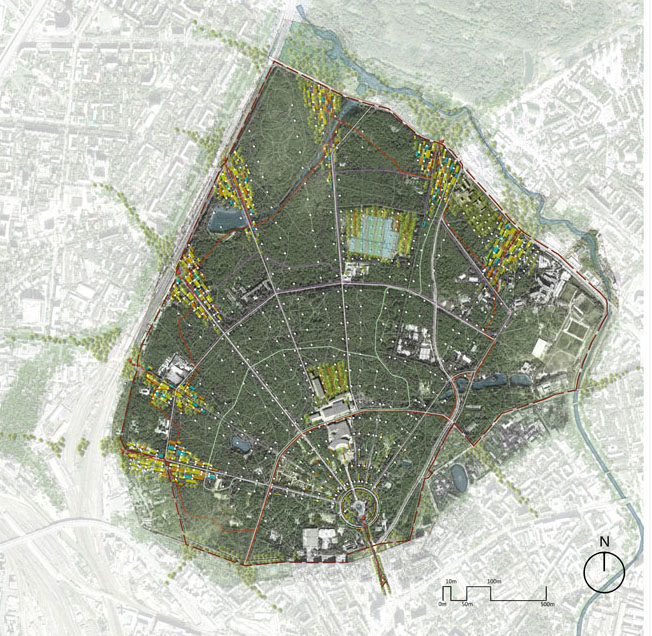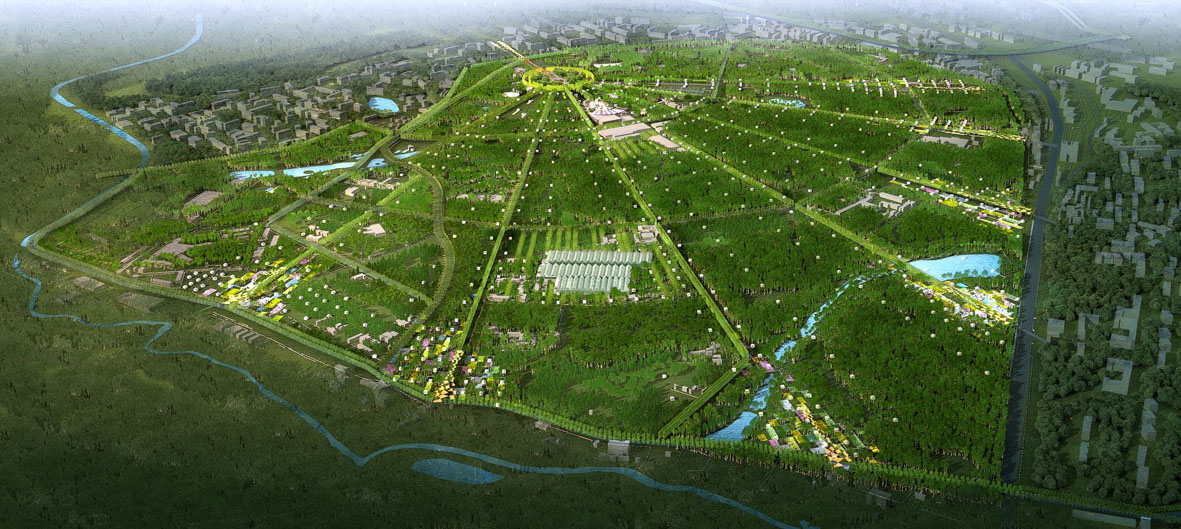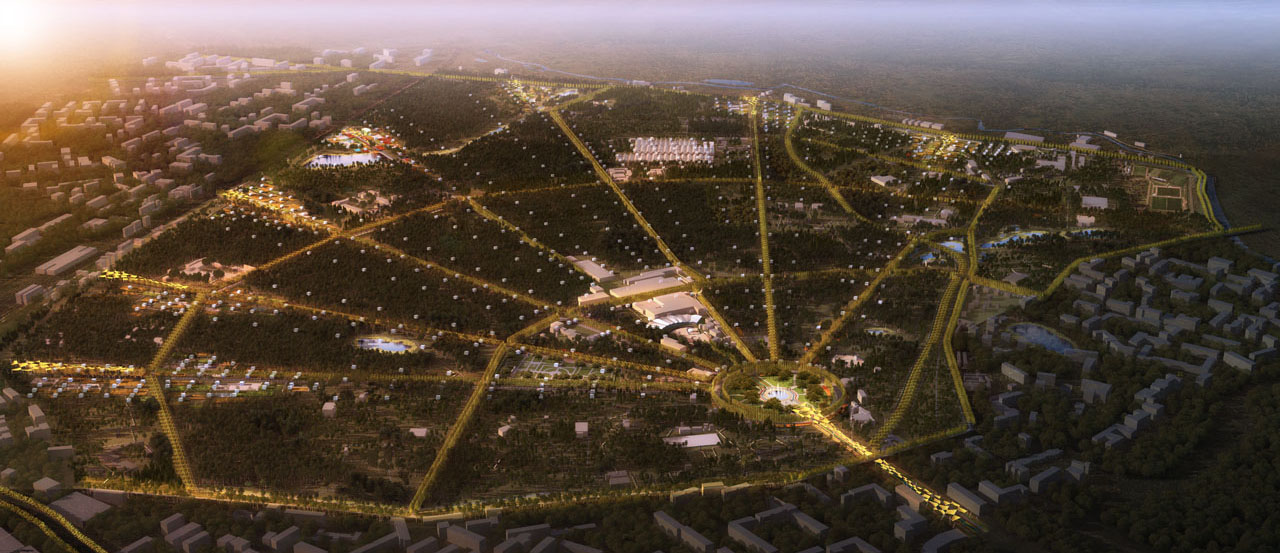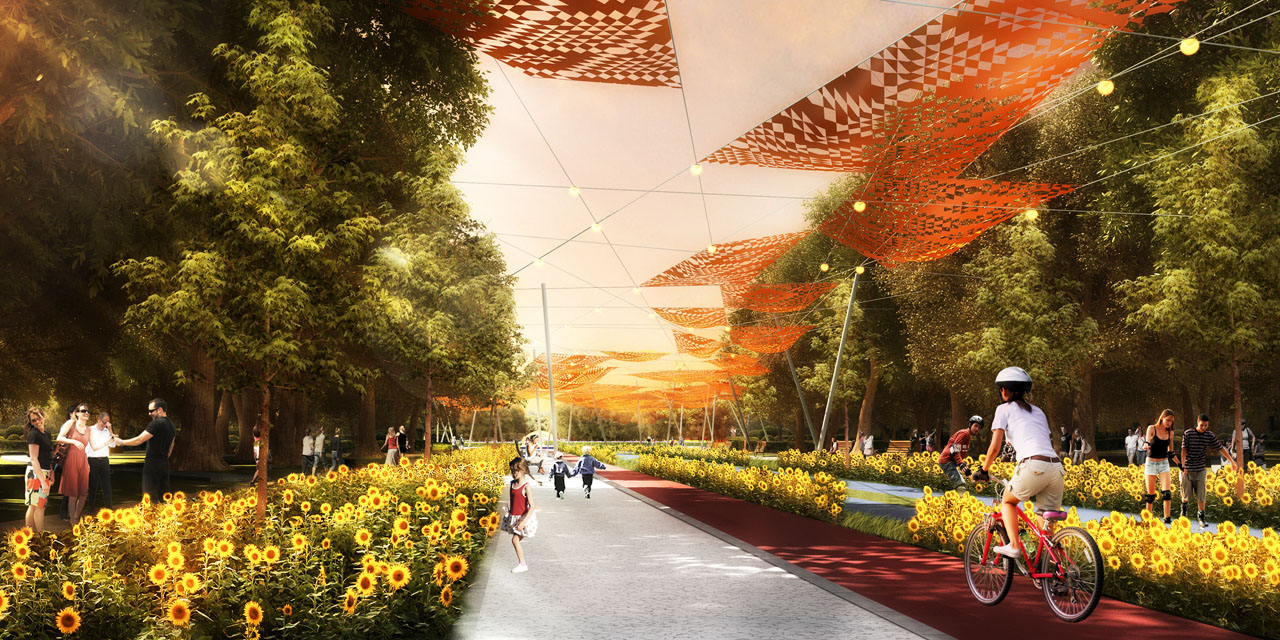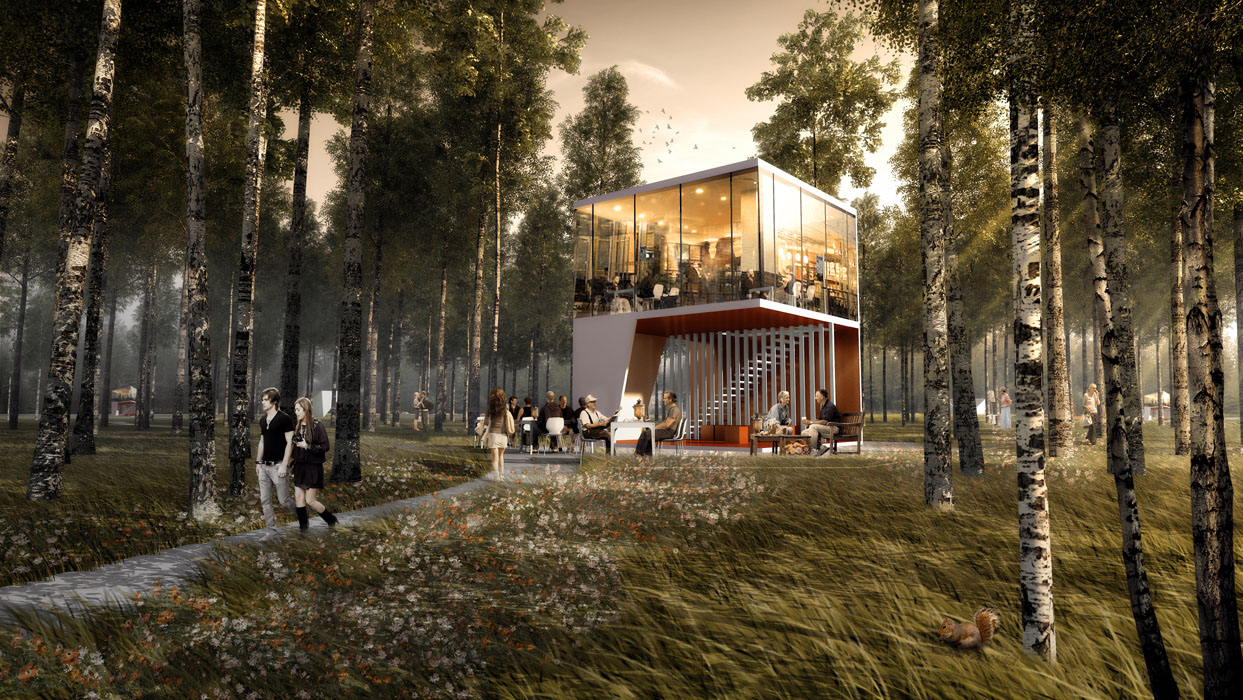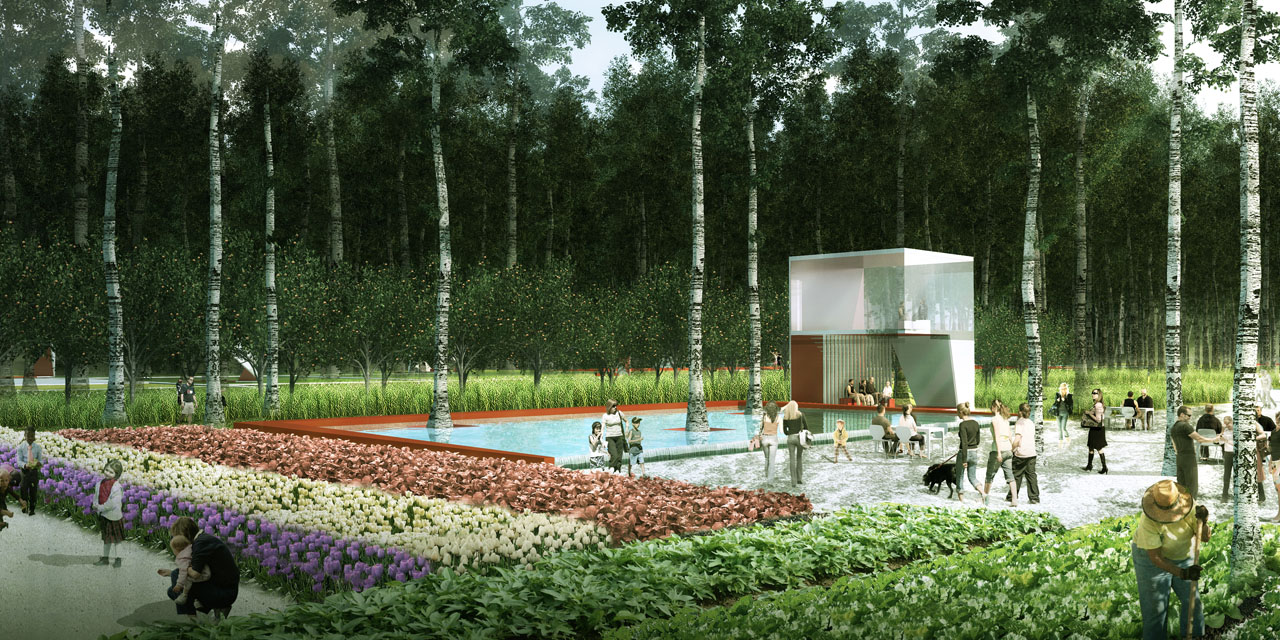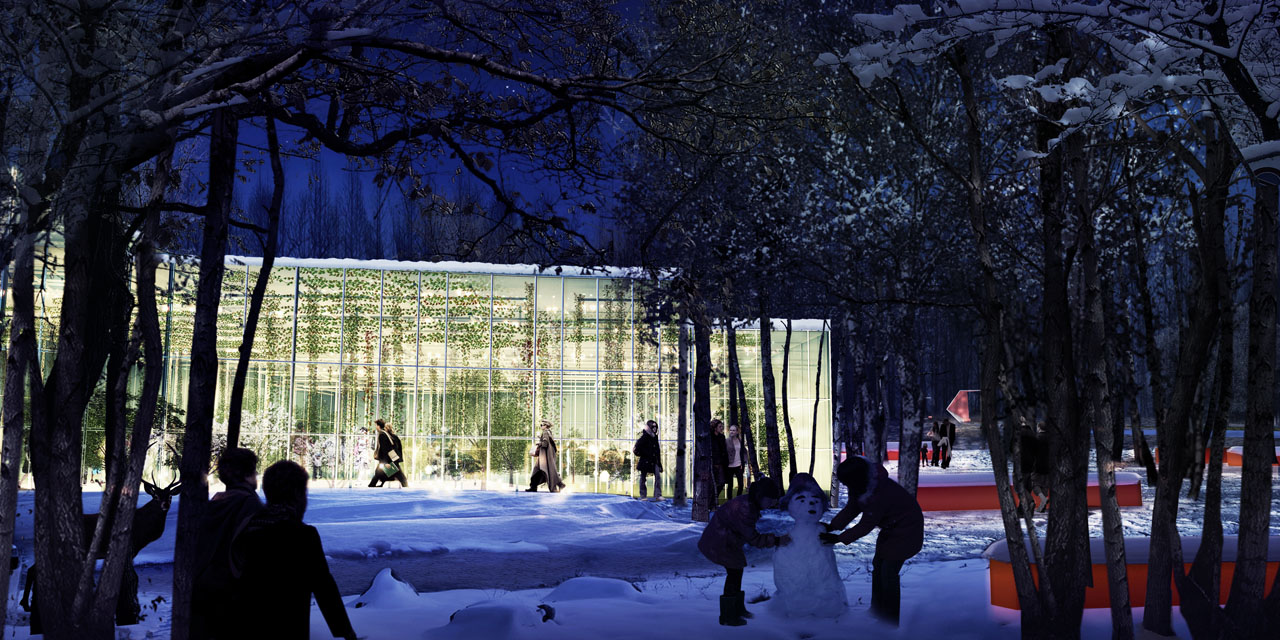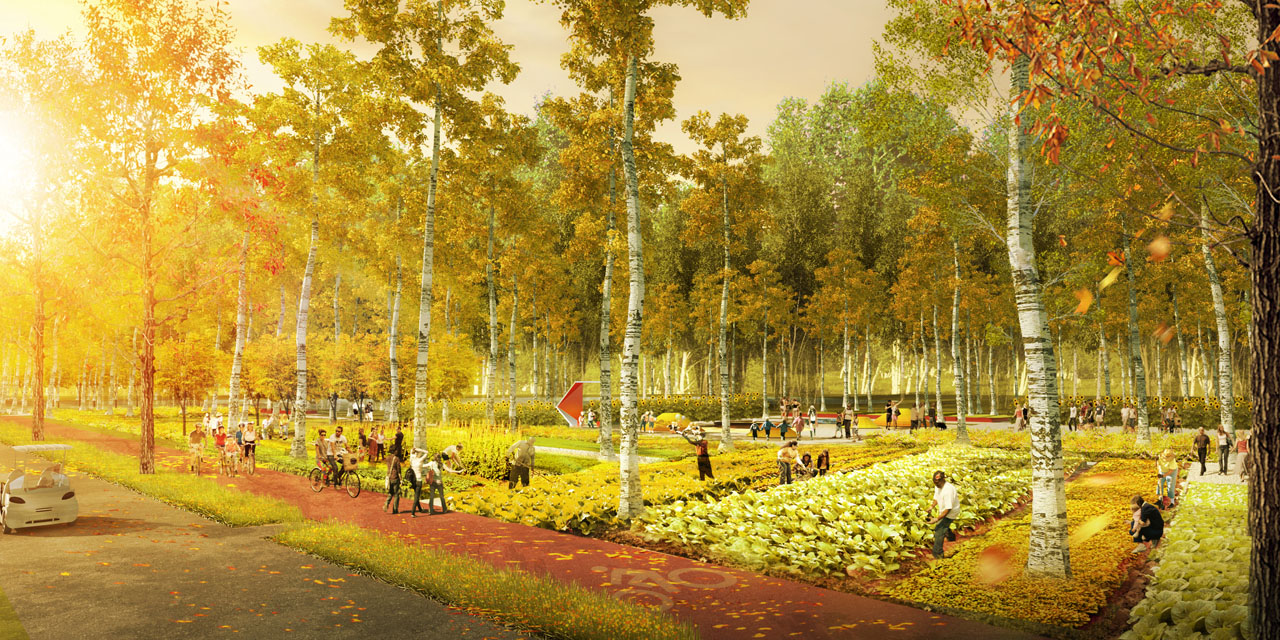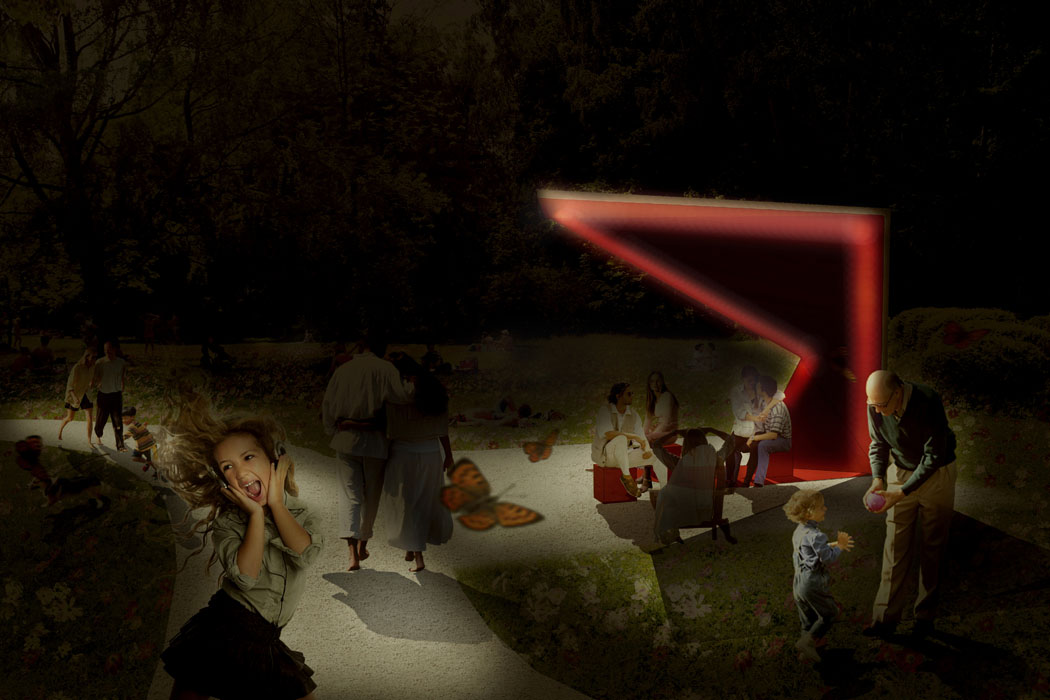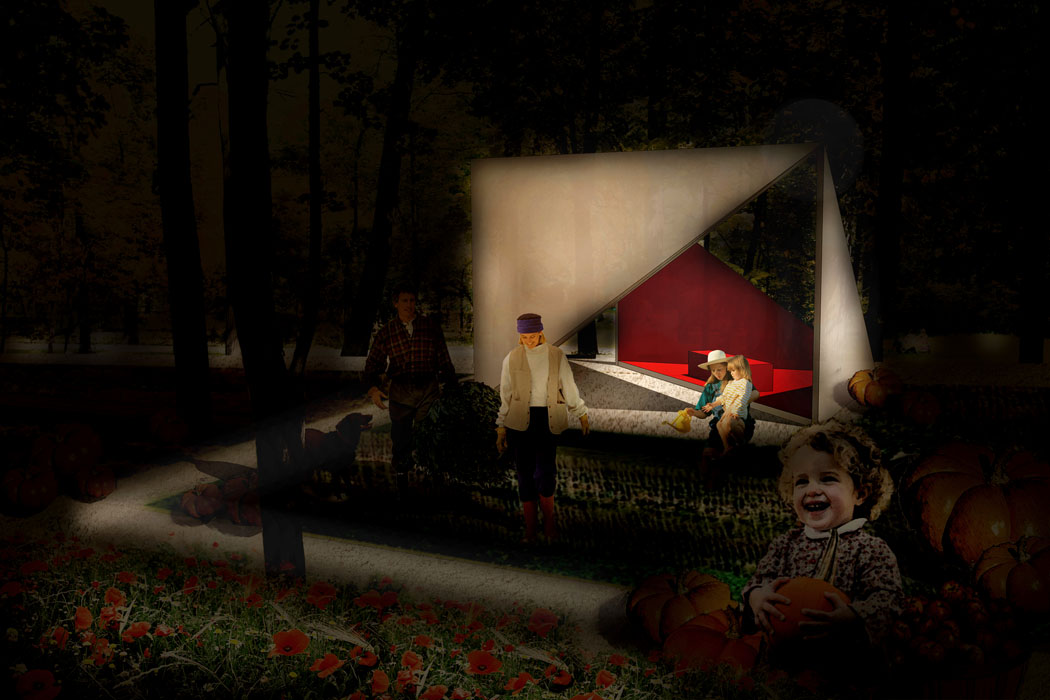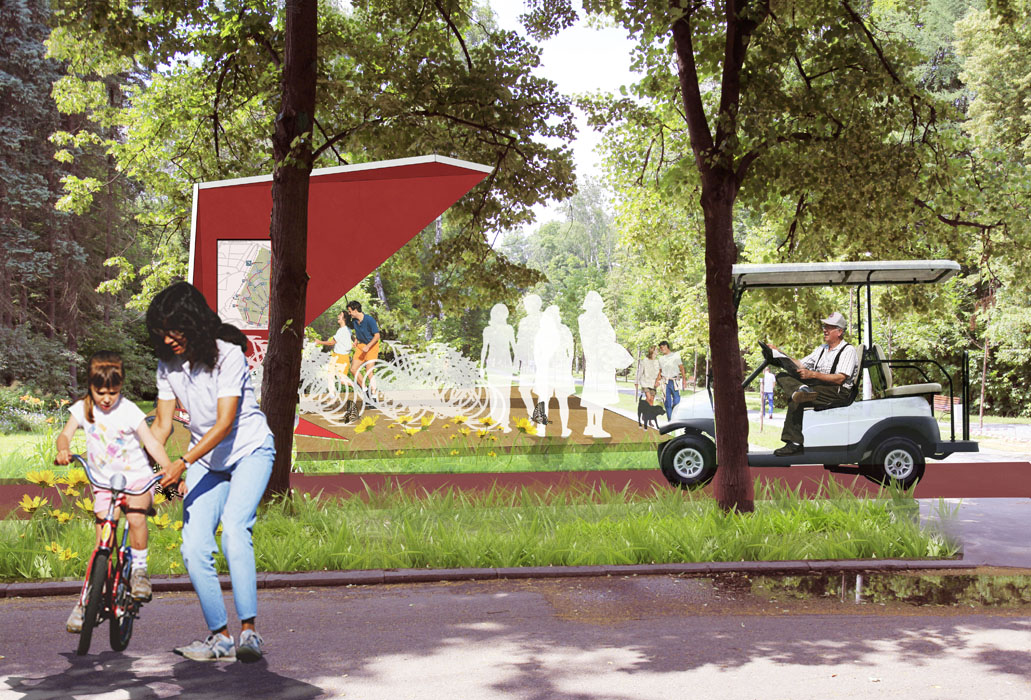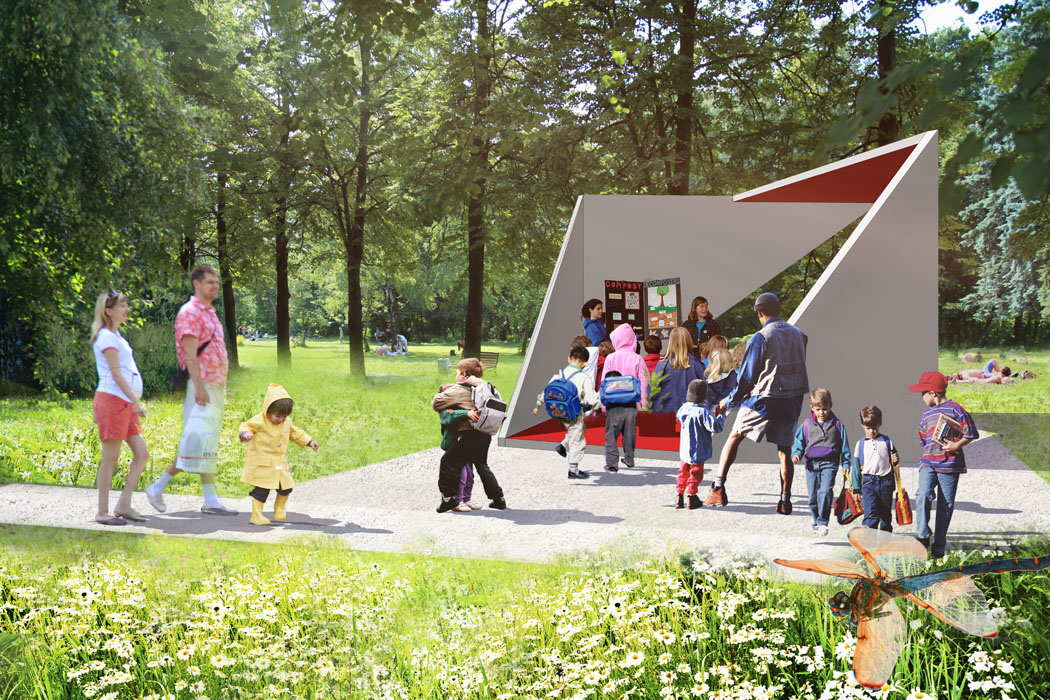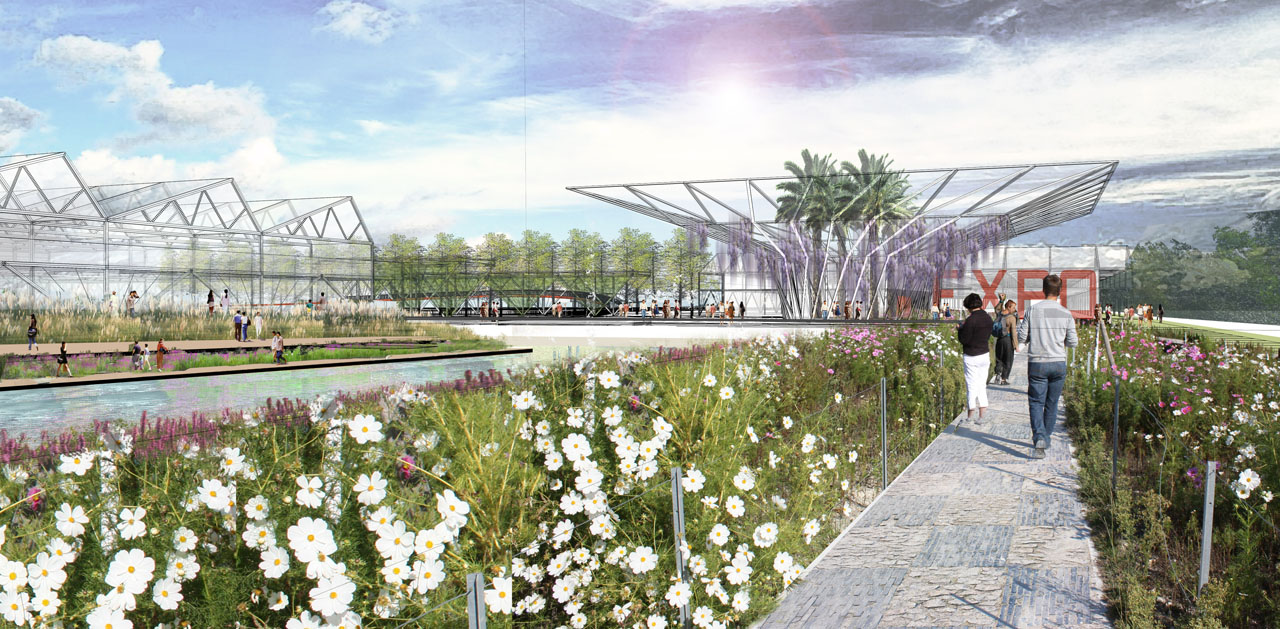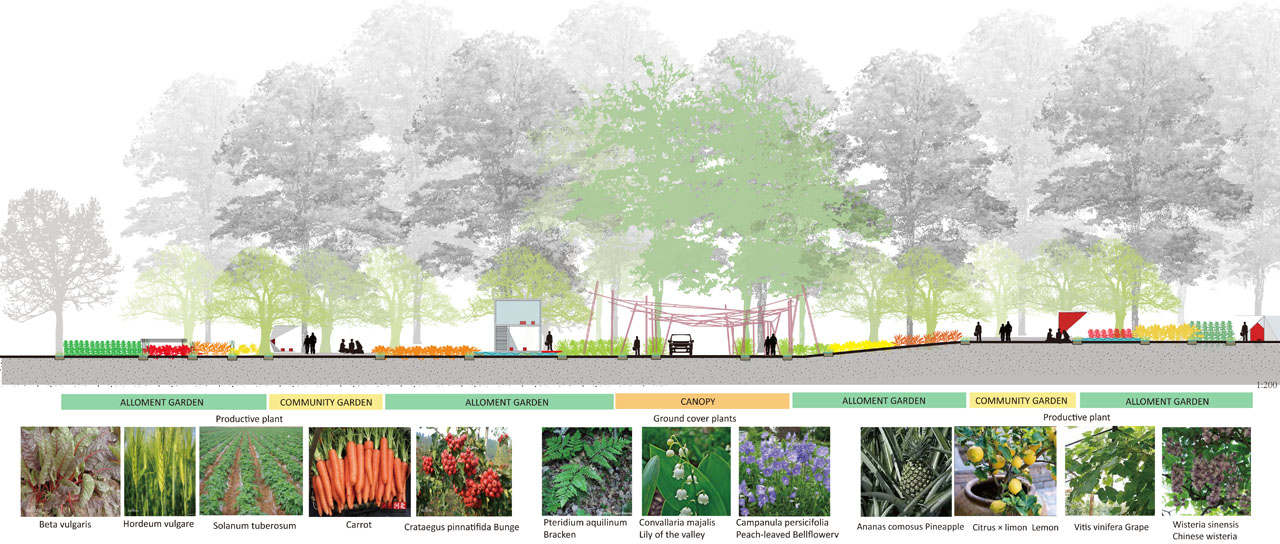Moscow Sokolniki Park
Project Information
- Project Location:
- Moscow Sokolniki
- Project Scale:
- 505 Hectares
- Design Time:
- July 2014
Project Profile
1. Project Statement
The “Tea Party Matrix” is a living mechanism that connects the past, present, and future of Sokolniki Park. The park development will incorporate the rituals of Russian tea culture into forward-thinking design interpretations as a leading vision guiding the 2030 master plan for the park.
2. Objective and Challenge
Challenge 1: The existing vegetation in the park is in good condition and has a high coverage rate. The design process should preserve the original vegetation of the park to the greatest extent possible.
Challenge 2: The existing vegetation species in the park are overly homogeneous, primarily consisting of evergreen trees, and lack seasonal variation.
Challenge 3: The existing service facilities in the park are too basic to meet the diverse functional needs of surrounding citizens for recreation, exercise, and festive activities.
3. Design Strategy
To become one of the world’s best and largest urban central parks, Sokolniki Park is envisioned as an urban vitality center, or teapot, with a natural, cultural, and recreational flavor. The primary challenge of the site is to define an organizational system that consolidates its dispersed programs into multifunctional gathering places and improves infrastructure to enhance visitor experience. The site will continue to offer the public a rich natural environment, memorable history, and a variety of daily, weekly, monthly, and yearly programs.
Based on the existing park layout, the application of the “Tea Party Matrix” focuses on maintaining the current park functions and providing new gathering opportunities for visitors through minimal development principles and design methods.
The “Tea Party Matrix” is a master planning design framework composed of three parts:
- Nodes: Frames, platforms, eaves
- Grid: Origins, latitude, and longitude lines
- Surfaces: Main entrance, secondary entrance, activity areas
The design strategy includes adding five design layers under the existing park conditions:
- Allocation: Activity surfaces for community entrance gardens;
- Grid: Structured planning network;
- Circulation: Paved routes and themed loops;
- Landscape: Row plantings and crops;
- Architecture: New revenue-generating pavilions and renovations of existing buildings.
The overlay of all design layers forms a living mechanism: a sustainable urban park ecosystem that regulates the site's ecological, incidental, and economic resilience. The specially designed “Tea Party Matrix” for Sokolniki Park aims to reconnect intimate natural environments, reveal fragments of cultural heritage, and reunify heterogeneous projects into a cohesive park.
4. Conclusion
This design adopts a minimal intervention strategy, with tea culture as the core, creating a “Tea Party Matrix” network that provides service facilities, science popularization installations, tea houses, and rest spaces. It also divides the park into various functional zones, offering a range of activity venues to meet seasonal and festive needs throughout the year. Additionally, the diversity of plant species is enhanced to create landscapes with different seasonal effects. The continuous slow-moving system and themed loops enrich the park’s experiential pathways.
The “Tea Party Matrix” is a new concept for the development of large parks in the 21st century. It is a system dedicated to enhancing the biodiversity of urban forest parks, containing the park’s historical memory and providing ample space for tea drinking. The “Tea Party Matrix” is a living mechanism that reconnects individuals with nature, culture, and activities, positioning Sokolniki Park as a unique cultural landscape for Moscow, Russia, and the world.

